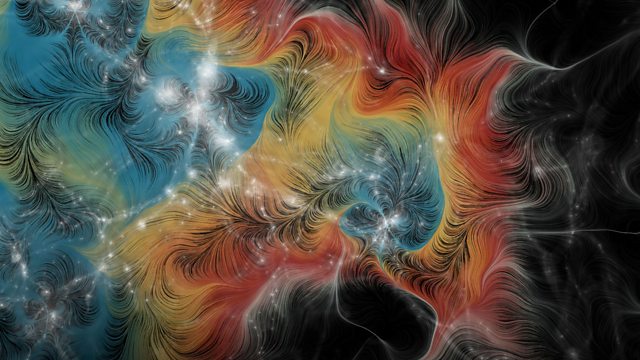Half a universe once lost now found
How half of the normal matter in the universe has been found. Also, why the next big collider should be muons, and a spindly spider that hangs out around underwater methane seeps.
The universe is thought to consist of 70% Dark Energy, 25% Dark Matter, and just 5% Baryonic matter which is the atoms that make up you and me. At least, that’s what the models suggest. But a well-kept secret between astronomers and cosmologists for all these years has been that they have not actually ever seen almost half of that 5% normal matter because it is thinly dispersed as gas between the galaxies and galactic clusters. This week, two studies have been published putting that right.
Satisfactory model-match #1:
Liam Connor of Harvard University with colleagues from Caltech have been using a mysterious phenomenon called Fast Radio Bursts (FBRs) to infer what the intergalactic medium is in between, and how much of it there is.
Satisfactory model-match #2:
Konstanios Migkas of Leiden University and colleagues have been looking at the very faint x-ray signal from the intergalactic medium, removing the incidental x-ray sources such as black holes, and have managed to identify some structure - in this case a mind-bendingly huge filament of ionised gas stretching between two galactic superclusters - confirming the state of “Warm Hot Intergalactic Medium” (WHIM) as predicted for much of the universe.
Of course, there is not just the cosmological standard model (lambdaCDM) that these satisfy in science today. There is also the remarkably resilient Standard Model of particle physics. A report this week from the US National Academies recommends the US begins building the world’s next particle collider to follow the work of the LHC (and FCC) at Cern. It should, as University of Tennessee at Knoxville’s Tova Holmes tells us, collide not ordinary, stable, easy to manipulate particles like protons and electrons, but muons.
Finally, Shana Goffredi of Occidental College in California, has found a VERY odd spider. Diving to depths in the submersible Alvin, they have found that a species of small sea-spiders, Sericosura, actually farm bacteria on their exoskeleton. Why? Because they hang around methane seeps on the ocean floor, where a specialist bacteria can metabolize methane – something the spiders themselves can’t do. Not only do the spiders then graze on the bacteria they carry around, they even pass samples of the bacteria onto their offspring by leaving bacterial lunch-boxes in their egg-sacs.
Presenter: Roland Pease
Producer: Alex Mansfield, with Sophie Ormiston
Production co-ordinator: Jasmine Cerys George
(Photo Credit: Jack Madden, IllustrisTNG, Ralf Konietzka, Liam Connor/CfA)
Last on
More episodes
Featured
-
.
Broadcasts
- Thu 19 Jun 2025 19:32GMT��ѿ��ý World Service
- Thu 19 Jun 2025 22:32GMT��ѿ��ý World Service Europe and the Middle East
- Fri 20 Jun 2025 04:32GMT��ѿ��ý World Service Australasia, Americas and the Caribbean, South Asia & East Asia only
- Fri 20 Jun 2025 08:32GMT��ѿ��ý World Service
- Fri 20 Jun 2025 12:32GMT��ѿ��ý World Service
 Sat 21 Jun 2025 01:32GMTLive News
Sat 21 Jun 2025 01:32GMTLive News- Sat 21 Jun 2025 01:32GMT��ѿ��ý World Service News Internet & East Asia only
- Sun 22 Jun 2025 23:32GMT��ѿ��ý World Service except East Asia, Europe and the Middle East, News Internet & South Asia
- Mon 23 Jun 2025 00:32GMT��ѿ��ý World Service Europe and the Middle East
Podcast
-
![]()
Science In Action
The ��ѿ��ý brings you all the week's science news.


